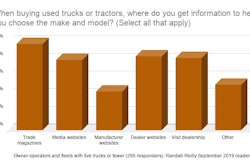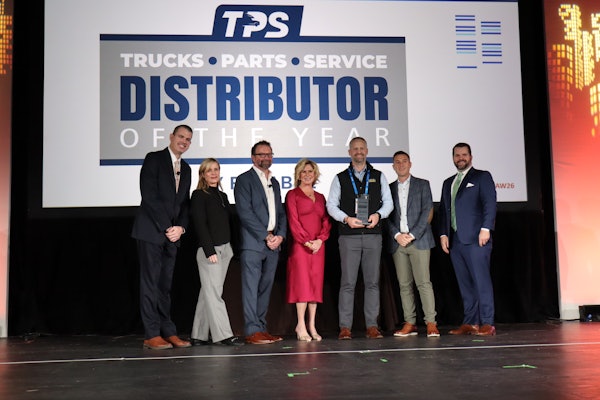By David Kalvelage, MacKay & Company
Automatic tire inflation systems (ATIS) and tire pressure monitoring systems (TPMS), whether used separately or in combination, are automated tools fleets should be using to replace the boring, repetitive and time-consuming task of keeping tires properly inflated. ATIS and TPMS can help fleets save on fuel costs, maximize tire life and prevent downtime and accidents caused by blowouts.
Educating fleets about using one or both systems will increase parts sales and improve fleet maintenance operations. ATIS systems automatically add air to underinflated tires or, in some systems, release air if the tire becomes overinflated. TPMS systems prompt the driver when tire pressure is low allowing the driver to safely get off the road to service the tire.
In his book, “Atomic Habits,” James Clear talks about how businesses achieve more with less effort by removing points of friction in their processes by designing products to automate, eliminate or simplify as many steps as possible. Educating fleets about ATIS and TPMS systems will help them remove the friction of manually checking and maintaining proper tire pressure.
A parts distributor can educate a fleet about the benefits of ATIS and TPMS by providing real world examples of the return on investment of ATIS and TPMS. The initial costs for TPMS systems can range from $700 to $1,200 per truck or trailer. ATIS systems cost a similar amount. It is critical to show fleets how that initial investment will pay off.
Properly inflated tires save on fuel costs. According to Goodyear, tires underinflated by 15 percent will cause fuel penalties of around 2.5 percent. A 2018 study by the American Transportation Research Institute cited fuel costs at 37 cents per mile. If a truck runs 50,000 miles per year, fuel costs would be about $18,500. Underinflated tires can easily add an additional $500 to $1,000 per year in fuel costs.
Optimizing tire life also saves money. According to Yokohama, running tires at 20 percent underinflation can reduce tire life up to 30 percent. Bandag states 20 percent underinflation reduces the life of a retread by 15 to 20 percent.
What about downtime cost savings? Underinflated tires cause irregular tread wear and increase the likelihood of a blowout. Bendix says about 90 percent of tire failures are caused by underinflation and nearly half of all roadside service repairs are tire-related.
Industry averages cite an out-of-service vehicle costs fleets $800 to $1,200 per day. Add to that another $700 to $1,000 for the cost of the service call and new tire and you can show a fleet how automated tire systems can save money.
Parts distributors also may review the cost of accidents caused by underinflated tires. Between insurance costs, down-time and vehicle repair, accidents caused by an improperly inflated tire can quickly escalate costs to thousands of dollars.
Finally, underinflated tires can hurt a fleet’s CSA score and increase the likelihood of having the vehicle placed out of service. Tire leaks are an 8-point CSA violation and underinflated tires are a 3-point violation. During last year’s Commercial Vehicle Safety Alliance International Road-check blitz, 19 percent of the 11,910 vehicles placed out of service received tire and wheel violations.
The benefits of ATIS and TPMS are numerous and easily offset the costs of implementation.
Why then do fleets not implement these systems?
Human nature. People often resist change and will continue to do what they have been doing, even if it’s time consuming and not cost effective.
Educate the fleets and show them that ATIS and TPMS can help them achieve more with less effort.
David Kalvelage joined MacKay & Company in 2002 as manager of database services and information technology. As a senior market analyst and client consultant, he currently works on providing market intelligence to clients to assist them in making management and marketing decisions.










